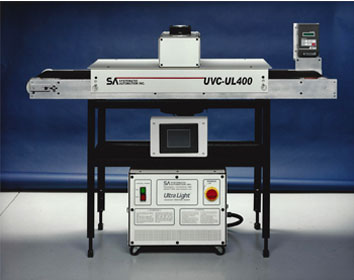
Choosing the hold down method which facilitates precision operations with quick changeover will provide the most benefits. Some common hold down methods used in various industrial processes include vacuum tables, clamps, jigs, screws or even adhesives. Here are a few of the top considerations when evaluating hold down methods for CNC or router processes.
The thickness of your substrate - the thickness of your substrate is an important factor when choosing the right hold down technology. While clamps or jigs may hold thicker substrates securely in place, they may not facilitate quick changeovers. Clamps can be time-consuming to remove and reapply, jigs may allow for some slippage and these hold down methods are typically not ideal for thin materials. Vacuum hold down technology will hold thin or flimsy materials firmly in place as well as securing thicker products for precision processes.
Changeover time - hold down methods which facilitate quick changeovers improve cycle times leading to increased productivity. This is one area where vacuum table technology outperforms other hold down methods. Quality vacuum tables can be designed with custom vacuum zones which can instantly be turned on or off for improved efficiency, productivity and profitability.
Material flow - the movement of material throughout your application is an important factor in choosing the right hold down technology. In certain cutting applications, special care must be taken to ensure that cut pieces do not fly off the table and pose a safety hazard.
Upon evaluation of these considerations, you may find that vacuum hold down technology provides the most benefit to your process. Consulting with a vacuum table specialist will help you to understand the features and benefits available to you.
Systematic Automation Assists with Evaluating Hold down Technology
The engineers at Systematic Automation offer more than 35 years of experience in designing vacuum tables for a wide range of industries and applications. We can help you to evaluate vacuum table technology compared to other hold down methods to help you choose the right system for your process. Our skilled engineers offer custom designed vacuum hold down tables to meet your specifications.
Our vacuum tables set the industry standard with +/- .001” per linear foot for any size of vacuum table system. Our standard vacuum tables range in sizes from 5” x 6” up to 72” x 144”, with even larger custom designed sizes available. We can program specific vacuum zones with controllable valves, custom design hole patterns and table top surface options including Formica or anodizing for corrosion resistance as well as designing sacrificial layers to protect your tabletop surface.
Systematic Automation is recognized worldwide for designing, engineering and manufacturing high quality vacuum table systems, as well as offering one of the widest selections of screen printing machines available. Our vacuum table systems complement many screen printing operations as well as a multitude of commercial and industrial processes.
Systematic Automation offers assistance in evaluating various hold down methods to meet your application requirements. We partner with you to custom design the right vacuum hold down table to provide maximum efficiency with precision quality. Contact us to learn how vacuum hold down technology can benefit your application and improve your product and process quality.
No comments:
Post a Comment